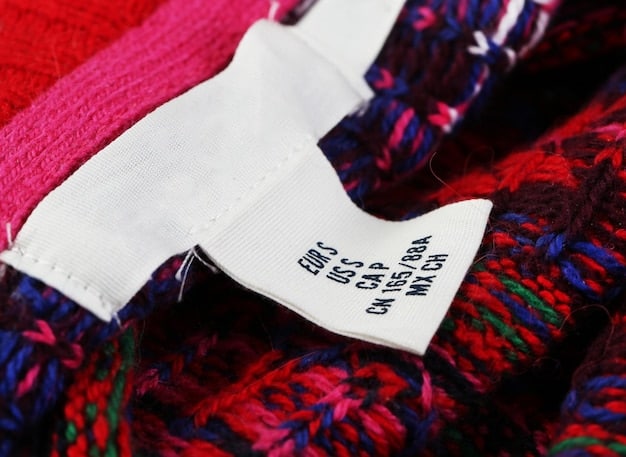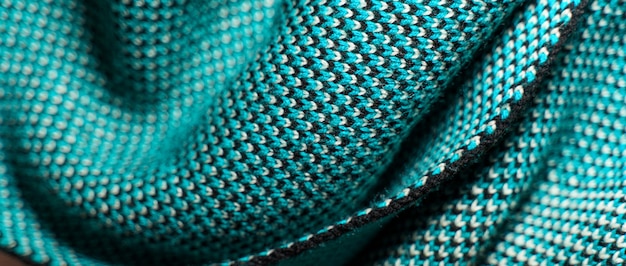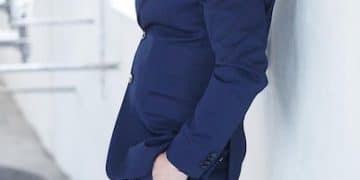How to Find Quality Clothing on a Budget: A US Shopper’s Guide

Advertisements
How to spot quality clothing at affordable prices involves examining fabric composition, construction details like seams and hardware, understanding fiber quality, and knowing when and where to shop for the best deals, empowering US shoppers to make smart buying decisions.
Finding how to spot quality clothing at affordable prices shouldn’t feel like an impossible mission. With a keen eye and a few savvy shopping strategies, you can build a wardrobe filled with pieces that look and feel great without breaking the bank.
Advertisements
How to Assess Fabric Quality Before You Buy
Understanding different fabrics and their properties is crucial when aiming to find quality clothing at affordable prices. The feel, drape, and durability of a garment all hinge on the fabric used. Knowing what to look for helps you make informed decisions.
Natural Fibers vs. Synthetics: What to Know
Natural fibers like cotton, linen, silk, and wool are generally more breathable and comfortable but can be pricier and require more care. Synthetics such as polyester, nylon, and rayon are often more affordable and easier to maintain, but may not feel as luxurious or last as long.
Advertisements
- Cotton: Look for long-staple cotton (like Egyptian or Pima) for softness and durability.
- Linen: Choose heavier weights for better drape and less wrinkling.
- Wool: Merino wool is soft and less itchy than other types.
- Polyester: Often blended with natural fibers to enhance durability and reduce wrinkling.
Evaluating Fabric Composition Labels
Always check the garment’s label to see the fabric composition. A higher percentage of natural fibers can indicate better quality. Look for blends that combine the benefits of both natural and synthetic fibers, such as cotton-polyester blends that offer comfort and durability.

In summary, understanding fabric types and checking composition labels are essential steps. By prioritizing natural fibers or smart blends, you can significantly improve your chances of finding quality clothing without overspending.
Construction Details That Indicate Quality
Beyond the fabric itself, the construction of a garment reveals a lot about its quality and durability. Keep an eye out for features that suggest careful craftsmanship and attention to detail.
Seam Finishes: A Sign of Durability
Well-finished seams prevent fraying and ensure that the garment holds up over time. Look for serged or overlocked seams, which are tightly stitched and reinforced. Avoid garments with raw, unfinished edges, as these are more likely to unravel.
- Serged Seams: Tightly wrapped edges to prevent fraying.
- Bound Seams: Fabric edges are enclosed with extra binding for a clean, durable finish.
- Flat-Felled Seams: Two pieces of fabric are joined by overlapping and stitching them together, creating a strong, flat seam.
Buttons, Zippers, and Hardware: The Finishing Touches
Check the quality of buttons, zippers, and other hardware. Buttons should be securely attached and made of durable material. Zippers should glide smoothly and not feel flimsy. Quality hardware can significantly extend the lifespan of a garment.
Paying attention to seam finishes and hardware quality can make all the difference in whether your clothing lasts for years or falls apart after a few washes. These details reflect the manufacturer’s commitment to quality and durability.
Understanding Fiber Quality and Its Impact
The quality of the fibers used in a garment greatly affects its overall appearance, feel, and longevity. Knowing how to assess fiber quality puts you in a better position to find value for money.
Thread Count: More Than Just a Number
While often associated with bedding, thread count can also be relevant for clothing made from woven fabrics. A higher thread count usually indicates a denser, more durable fabric. However, it’s not the only factor to consider; the type of fiber and weave also matter.
The Importance of Weave and Knit Structures
Different weave and knit structures affect the fabric’s texture, drape, and stretch. Tightly woven fabrics like twill and denim are generally more durable than loosely woven fabrics like gauze. Knit fabrics can vary from lightweight jersey to more substantial sweater knits.

Understanding factors like thread count, weave, and knit structures helps you to better assess the quality and suitability of a fabric. These elements contribute to the overall performance and appearance of the garment.
When and Where to Shop for the Best Deals
Timing and location are critical factors in finding quality clothing at affordable prices. Knowing when and where to shop can substantially increase your chances of scoring great deals on high-quality items.
Seasonal Sales and Clearance Events
Take advantage of seasonal sales, such as end-of-season clearances, Black Friday, and holiday sales. Retailers often offer significant discounts to clear out old inventory and make room for new collections. Sign up for email newsletters to stay informed about upcoming sales events.
Thrift Stores and Consignment Shops: Hidden Gems Await
Thrift stores and consignment shops are excellent places to find gently used, high-quality clothing at a fraction of the original price. Take your time to browse through the racks, and don’t be afraid to try things on. You might be surprised at the hidden gems you uncover.
- Vintage Finds: Often made with higher-quality materials and construction techniques.
- Designer Deals: Opportunities to find luxury brands at discounted prices.
- Eco-Friendly: Sustainable shopping option that reduces textile waste.
By strategically timing your purchases and exploring alternative shopping venues, you can maximize your budget without compromising on quality.
Caring for Your Clothes to Extend Their Lifespan
Proper care extends the life of your clothing and keeps it looking its best. Following care instructions and implementing smart practices can save you money in the long run.
Reading and Following Care Labels
Always read and follow the care instructions on the garment’s label. These instructions provide valuable information on washing, drying, and ironing to prevent damage and maintain the fabric’s integrity.
Washing and Drying Techniques That Protect
Use gentle detergents and wash clothes inside out to minimize fading and wear. Avoid over-drying, as high heat can damage fibers and cause shrinkage. Consider air-drying delicate items to prolong their lifespan.
By adopting proper care habits, you not only keep your clothes looking newer for longer but also reduce the frequency of replacements, leading to significant cost savings overall.
Spotting Quality Clothing Online
Navigating the world of online shopping requires a different set of skills. Evaluating clothing quality virtually presents unique challenges, but with the right strategies, you can make confident purchasing decisions.
Analyzing Product Descriptions and Reviews
Carefully read product descriptions for details on fabric composition, construction, and care instructions. Pay attention to customer reviews, which can offer insights into the garment’s fit, quality, and durability.
- Fabric Details: Look for specific information on fiber types and blends.
- Customer Photos: Examine photos uploaded by other customers to get a realistic view of the garment.
- Return Policies: Ensure the retailer has a generous return policy in case the item does not meet your expectations.
Understanding Brand Reputation and Ethics
Research the brand’s reputation for quality and ethical practices. Look for brands that prioritize sustainable materials and fair labor standards. A brand’s commitment to quality often translates into better-made, longer-lasting clothing.
By combining a careful analysis of product details with an understanding of brand reputation, you can increase your chances of finding quality clothing through online channels.
| Key Point | Brief Description |
|---|---|
| 🧵Check Fabric | Opt for natural fibers or smart blends for comfort and durability. |
| 🪡Inspect Seams | Look for serged or bound seams to prevent fraying and ensure durability. |
| 🛒Shop Smart | Utilize seasonal sales and explore thrift stores for hidden gems and discounts. |
| 🧺 Proper Care | Follow care labels and use gentle washing techniques to extend garment life. |
FAQ
▼
Fabrics that are loosely woven or made from shorter fibers are more prone to pilling. Give the fabric a gentle rub against itself; if small balls start to form, it’s likely to pill over time.
▼
Poor quality zippers often feel flimsy, stick, or have uneven teeth. They may also separate easily. Look for zippers that glide smoothly and have sturdy metal or durable plastic teeth.
▼
Not necessarily. While higher prices often correlate with better materials and craftsmanship, it’s essential to evaluate the garment’s fabric, construction, and details, rather than relying solely on the price tag.
▼
Checking the lining is crucial, especially in tailored items like jackets and coats. A quality lining should be smoothly sewn, made from a durable fabric, and reinforce the structure of the garment.
▼
Examine the stitching for evenness, tightness, and consistency. Loose or uneven stitches can indicate poor construction and a higher likelihood of the garment falling apart over time.
Conclusion
Mastering the art of finding how to spot quality clothing at affordable prices involves a combination of knowledge, strategy, and attention to detail, empowering US shoppers to build a stylish, durable wardrobe without straining their wallets.





